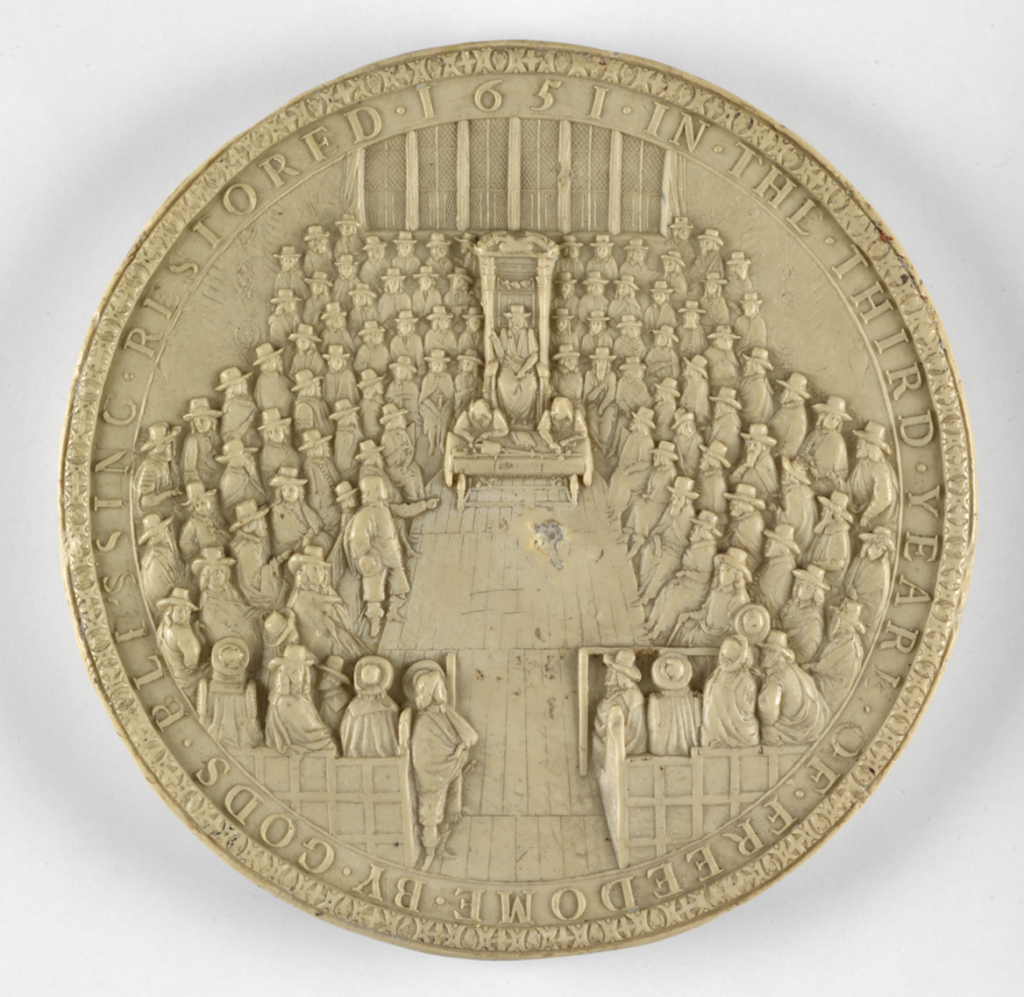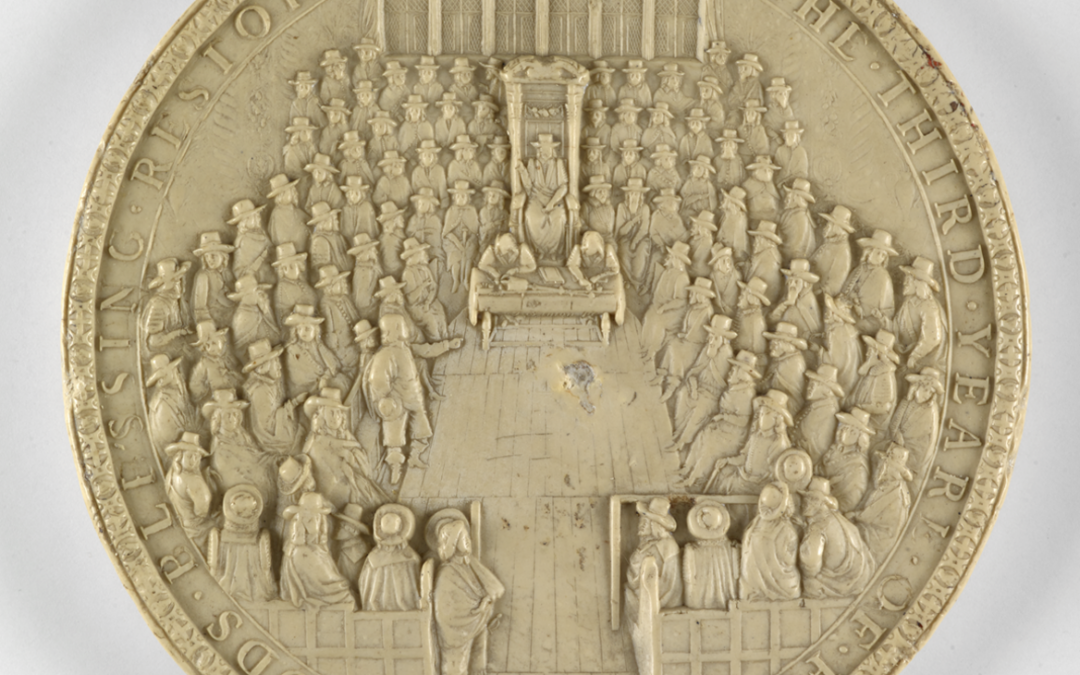2023 sees the publication of History of Parliament’s long-running House of Commons 1640-1660 project. This blog post by Dr Stephen Roberts has been cross-posted from the History of Parliament blog. The IHR library is grateful for The History of Parliament Trust’s gift of The House of Commons, 1640-1660. The volumes were added to our collection in May 2023, having been much anticipated by readers. They have been heavily-used and commented on in recent months.

Since 2010, the History of Parliament’s published survey of the House of Commons has provided complete coverage from 1509 to 1832 – with one notable exception. That gap is now made good with the publication of The House of Commons, 1640-60. In 9 volumes, this is the largest set the History of Parliament has produced so far. Running to little short of 7 million words and nearly 9,000 pages, these volumes contain biographies of every person who sat in the House of Commons, or in the Parliament when it consisted of only one House, during the turbulent times of the British civil wars and their aftermath, the Commonwealth or English republic (1649-53), and the protectorate of Oliver Cromwell (1653-58). As with every set of History of Parliament volumes, Volume One is an Introductory Survey, guiding readers through some of the most important themes in the history of the Commons in the period. During part of the period covered by these volumes, Parliament was not only a legislative and judicial body, but an executive authority, running the country. Therefore, and uniquely in History of Parliament volumes to date, there are also articles on the most important of the executive committees of the Long Parliament: during the 1640s the mainspring of Parliament’s grip on government.
The project has been active for many years. It began in a small way during the early 1980s, when preparatory work was begun by Peter Hasler, the Director, or General Editor as he was then styled. Only during the 1990s were sufficient resources directed towards the project to enable the creation of a team of five full-time historians to concentrate on the production of articles, and that was subsequently the size of the team which saw the project through to completion. In all, over the whole life of the project, some 12 historians have worked full time on it.
Such was (and is) the contested nature of parliamentary history in this period, that even the number of Parliaments, and for that matter the essence of what constitutes a Parliament, are open to question. Should the Nominated Assembly of 1653, summoned only on the authority of the then lord general, Oliver Cromwell, be called a Parliament? And when in 1659 the ‘rump’ of the Long Parliament, purged by the army of over 100 members in December 1648, reassembled after the collapse of the protectorate of Cromwell’s son, Richard, was that a new Parliament, and what was its legitimacy? It was certainly different in size and complexion from the original Long Parliament which first met in November 1640.
The number of constituency articles in these volumes exceeds any in preceding chronological periods covered by the History. This not least because for the first time, Members representing Scottish and Irish constituencies sat in the English House of Commons from 1653. For each constituency, details of the franchise are supplied, and names listed: of the MPs who in elections succeeded, and of their rivals who failed. In each case, the character of an election is traced, whether it was an agreement by the gentry or a hard-fought contest by factions; whether a result imposed from afar, or an outcome reflecting live local issues. Was election or selection the dominant principle at work when parliamentary representatives were chosen?

Answers to these and many other posers are to be found in these volumes, chiefly through the 1,800 biographies of MPs and 329 constituency articles which form the core of the work. Every individual, however great or minor, has been identified, with one or two exceptions where remaining doubts have been recorded – in the hope that someone one day might dispel the few remaining wisps of mystery. Only one, the MP for Wigan in 1659, lacks a forename for certainty: was he Raufe or Robert Markland? No such doubts surround the vast majority of Members whose lives are charted in these pages. Every life has been researched according to a rigorous and systematic process of enquiry. Starting with details of an individual’s life and death dates, his family background, marriage details and numbers of children are recorded if available, moving on to his educational and employment experiences. In the narrative of any biography, priority is given to the member’s parliamentary career, then to his wider public life. The subjects of some of our biographies are better known for attainments in fields other than the parliamentary – Andrew Marvell as a poet, Sir Thomas Fairfax as a soldier, for example – so our biographies supply a less well-explored dimension to the lives of these figures. Naturally, the lives of the political titans of the period will be found here: John Pym, Oliver Cromwell, Edward Hyde (later the earl of Clarendon, Sir Henry Vane (father and son); but also, equally fascinatingly, those who commanded no admirers or detractors in the Commons, whose careers in Parliament were slight and largely anonymous, but who in aggregate contributed to the makeup of the House in a remarkable period of its history.

